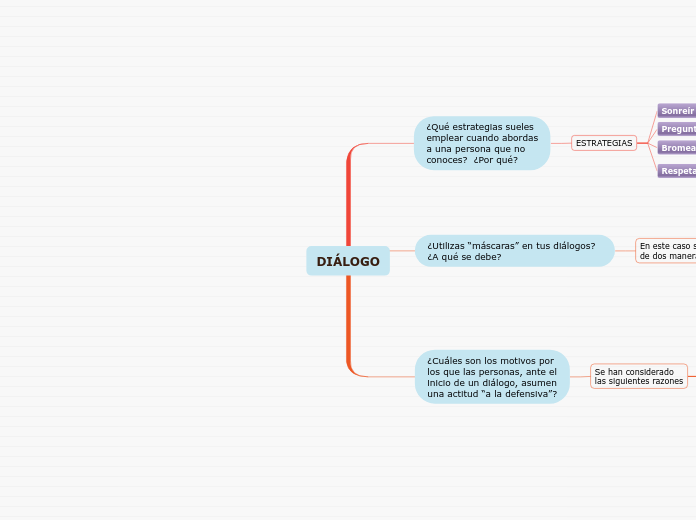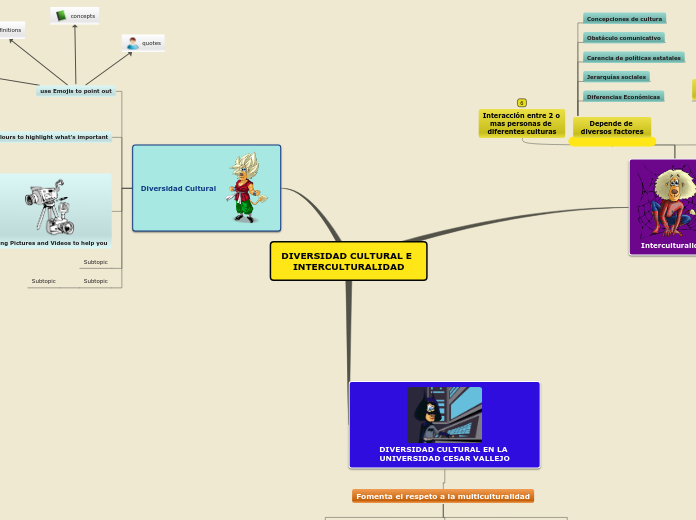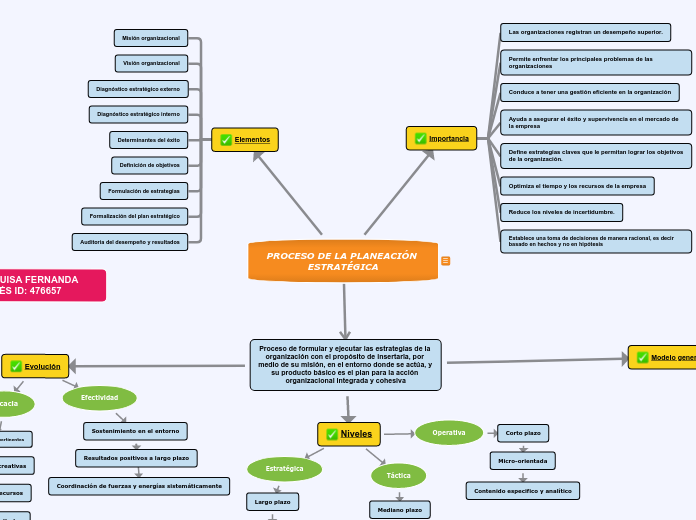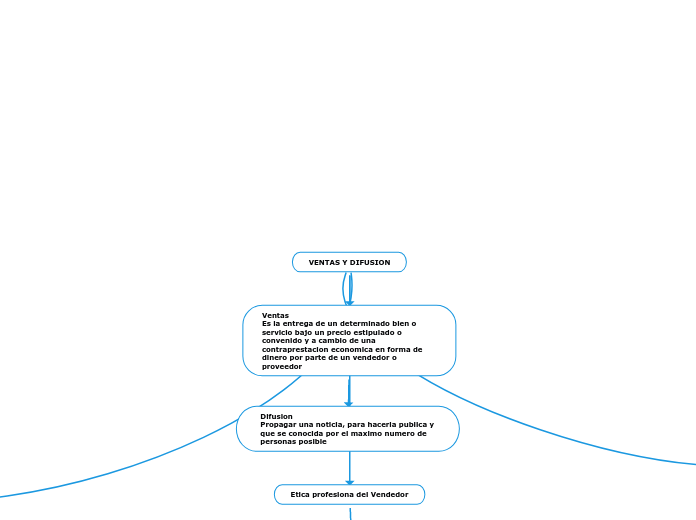DIÁLOGO
To name your story, you have to think about the overall message and what you want your audience to understand from the story. Also, make it relevant and easy to remember.
¿Cuáles son los motivos por
los que las personas, ante el
inicio de un diálogo, asumen
una actitud “a la defensiva”?
The ending of a story is essential. We all know that if the ending is weak, what happened before loses its importance. So make it unpredictable, but fair. A resolved ending answers all the questions and ties up any loose threads from the plot.
Se han considerado
las siguientes razones
This is the moment when the main character surpasses the last obstacle and finally faces their greatest challenge.
The climax usually follows one of these patterns:
- realization
- resolution
- choice
Type in your answer.
Se sienten intimidados por nuestra presencia y sienten que deben defernderse
De aquí deriva cuando
comienza a actuar y
responder cortantemente.
Quizás se sienten identificados con el tema de conversación y eso le incomoda.
Porque no quieren darse a conocer o abrirse fácil a las personas
No quiere hablarte y evita el tema de conversación.
¿Utilizas “máscaras” en tus diálogos? ¿A qué se debe?
The middle of the story is where you add layers of complications that will lead to the end. Reveal more about the character's journey. Did their personality go through changes? How did they overcome the challenges? And as you build up the story’s central conflict, make it more personal to that character. Also, from the middle act, you have to lead into the final act.
En este caso se ve de dos
de dos maneras
There wouldn't be any tension and excitement in your story if there weren't any obstacles in your character's way.
No
A story is nothing more than a character overcoming a series of difficulties to reach the desired goal. Obstacles usually create suspense and conflict. In overcoming obstacles, there is growth: weak becomes strong; hatred turns into love; sadness into happiness; wrong into right; lies into truth; or evil becomes good.
See a few examples below:
- stopping a meteor
- finding a killer
- finding love
Debemos reflejar nuestra verdadera personalidad desde un principio.
Porque la sinceridad es primordial
Si
Porque gracias a eso uno se siente más relajado y sin miedos a equivocarse.
¿Qué estrategias sueles
emplear cuando abordas
a una persona que no
conoces? ¿Por qué?
In the beginning of the story (or the exposition), you will need to introduce the setting and characters. You might also want to introduce the main conflict. This part of the story is important because it gives the reader necessary background information and maybe even a first insight into a character’s personality.
ESTRATEGIAS
The setting (time & place) of a story can change throughout the plot.
Respetar
Sensory details include sight, sound, touch, smell, and taste. These details are important because they create depth in your setting.
See a few examples below:
- the smell of fresh bread
- the scent of freshly cut grass
- rain falling onto the windshield etc.
Esto se refiere a respetar el espacio personal de la persona, para que no se sienta invadida.
Bromear
The weather is an important element in your story because it can highly influence the ambiance and the mood of the characters.
Realizar una broma sana para romper el hielo ❄
Decide if you want to include an element of nature in your story. For example, a rainbow can be a very nice choice for a happy ending. The mist in a story can represent mystery and secrets. A thunder can appear in the background at the moment when the 'bad guy' of the story makes its appearance, etc.
Preguntar
The time of the story can also change. It can describe the event of a single day or can include an entire year's plot. Anyway, don't forget to mention it.
Hacer preguntas acerca de sus gustos
Sonreír 😊
Your story can take place wherever your imagination will take you to.
For example: in an elevator, in an enchanted forest, etc. Don't forget to give details of the environment each time the setting changes, otherwise, the story can be confusing. Also, mention the seasons as each of them has unique weather and events.
Para mostrar amabilidad










